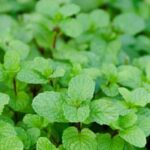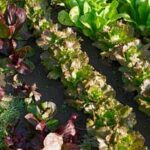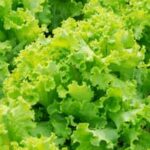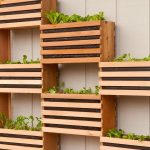Container vegetables gardening ideas are a great way to bring the joy of gardening to small spaces and urban environments. Whether you have limited outdoor space or just want to add some greenery to your patio or balcony, container vegetable gardening is a fantastic option. In this article, we will explore the world of container vegetable gardening and provide you with everything you need to know to get started, from choosing the right containers to troubleshooting common issues.
Container vegetable gardening is a convenient and accessible way for anyone to grow their own food, even if they don’t have a traditional garden plot. With the right containers, soil, and care, you can successfully grow a wide variety of vegetables right on your doorstep. In the following sections, we will cover everything from choosing the best vegetables for container gardening to essential tools and supplies, as well as creative DIY ideas for your container garden.
In addition to providing fresh produce and a rewarding hobby, container vegetable gardening can also add beauty and charm to your outdoor space. With careful planning and design, you can create an aesthetically pleasing container garden that enhances your home’s visual appeal while still providing delicious homegrown vegetables. So let’s dive into the world of container vegetable gardening and discover all the tips and tricks for successful cultivation in limited spaces.
Choosing the Right Containers for Your Garden
When it comes to container vegetable gardening, choosing the right containers is crucial for the success of your garden. The first thing to consider is the size of the containers. Larger vegetables such as tomatoes and peppers will need larger containers, while smaller plants like herbs can thrive in smaller pots. It’s important to ensure that the containers have enough space for the roots to grow and that they provide adequate support for the plants as they mature.
The material of the containers is also an important factor to consider. Plastic, ceramic, wood, and fabric are all popular choices for container gardening. Each material has its own advantages and disadvantages, so it’s important to choose based on your specific needs and circumstances. For example, plastic containers are lightweight and durable, while ceramic pots are more aesthetically pleasing but can be heavier and more prone to breakage.
In addition to size and material, you should also think about drainage when choosing containers for your vegetable garden. Proper drainage is essential for preventing waterlogged soil, which can lead to root rot and other issues. Look for containers with drainage holes or plan on creating them yourself if necessary. With these considerations in mind, you’ll be well on your way to selecting the perfect containers for your container vegetables gardening ideas.
Best Vegetables for Container Gardening
When it comes to container vegetables gardening ideas, choosing the right vegetables to grow in your containers is crucial for a successful and bountiful harvest. While many vegetables can thrive in containers, some are better suited for this type of gardening than others.
One of the best vegetables for container gardening is tomatoes. They are versatile and can be grown in small to medium-sized containers, making them ideal for gardeners with limited space. Other great options include peppers, lettuce, spinach, and radishes. These vegetables don’t require a lot of space to grow and can be easily accommodated in a container garden.
Another excellent choice for container vegetable gardening is herbs such as basil, parsley, and chives. These flavorful herbs not only add variety to your meals but also thrive in small pots or containers. Additionally, they can be grown alongside other vegetables in the same container, maximizing the use of space and creating a visually appealing garden.
Some root vegetables like carrots and beets can also be grown in containers with proper depth and size. These vegetables do well in loose soil with good drainage, making them suitable candidates for container gardening. By choosing the best vegetables for your container garden, you can ensure a thriving and productive harvest while enjoying the convenience and flexibility that container gardening offers.
Tips for Proper Soil and Drainage in Containers
When it comes to container vegetables gardening ideas, the proper soil and drainage are crucial for the success of your garden. Here are some tips to ensure that your vegetables have the best growing conditions in their containers:
1. Choose the Right Soil: When planting vegetables in containers, it’s important to use a high-quality potting mix that is specifically formulated for container gardening. This type of soil provides excellent drainage, aeration, and water retention – all essential for healthy plant growth.
2. Provide Adequate Drainage: Proper drainage is essential to prevent waterlogged soil, which can lead to root rot and other issues. To ensure good drainage, select containers with drainage holes at the bottom. You can also add a layer of gravel or small stones at the bottom of the container before adding the soil to improve drainage.
3. Consider Adding Organic Matter: Incorporating organic matter such as compost or vermiculite into your potting mix can help improve soil structure and fertility, ensuring that your vegetable plants have access to essential nutrients as they grow.
By paying close attention to the type of soil you use and ensuring proper drainage in your containers, you can create an optimal growing environment for your container vegetable garden. These simple yet crucial steps will set the foundation for healthy and thriving vegetable plants in your garden.
Essential Tools and Supplies for Successful Container Gardening
When it comes to successful container vegetables gardening ideas, having the right tools and supplies is essential for ensuring your plants thrive. Here are some of the must-have items for a thriving container garden:
- High-quality potting mix: A nutrient-rich potting mix is crucial for providing your vegetables with the necessary nutrients to grow healthy and strong.
- Appropriate containers: Choose containers that are the right size for the vegetables you want to grow, ensuring they have enough space for their roots to flourish.
- Watering can or hose: Proper watering is key to the success of your container garden, so having a watering can or hose with a nozzle attachment for gentle watering is essential.
- Gardening gloves: Protect your hands while working in your container garden with a sturdy pair of gardening gloves.
Having these essential tools and supplies on hand will set you up for success in your container vegetable gardening efforts. It’s important to invest in high-quality items to ensure that your plants have everything they need to thrive. By selecting the right materials, you can make the process of growing vegetables in containers a rewarding and enjoyable experience. With proper care and attention, you can look forward to a bountiful harvest from your container garden.
In addition to these basic necessities, there are also various accessories and additional supplies that can enhance your container gardening experience. Items such as fertilizers, stakes or supports, and insect repellents may be useful depending on the specific needs of your vegetable plants.
And don’t forget about decor elements like colorful plant markers or decorative pots to add personality and style to your container garden. By equipping yourself with the right tools and supplies, you’ll be well-prepared to embark on a successful journey into container vegetable gardening.
Designing and Arranging Your Container Garden
When it comes to container vegetable gardening ideas, the design and arrangement of your garden are crucial for its success. First, consider the space where you will be placing your containers. Make sure that the location gets plenty of sunlight, as most vegetables need at least 6-8 hours of direct sunlight per day.
Once you’ve identified the best spot, think about the aesthetic appeal of your container garden. Mixing different sizes and shapes of containers can create an interesting visual effect. You can also use trellises or stakes to support climbing plants such as tomatoes, cucumbers, or peas.
Another important aspect to consider when designing your container garden is the layout. Grouping together containers with similar water and sunlight needs can make maintenance much easier. For example, place herbs that require frequent watering and partial shade in one area, while grouping together sun-loving vegetables like peppers and eggplants in another.
In terms of arranging your containers within your chosen space, think about both form and function. Place taller plants towards the back if your containers are up against a wall or fence so they don’t overshadow smaller plants. Consider using hanging baskets for trailing vegetables like cherry tomatoes or strawberries to maximize vertical space.
By carefully planning the design and arrangement of your container garden, you can ensure that both the visual appeal and productivity of your vegetable plants are maximized.
| Container Vegetable Gardening Design | Arrangement Tips |
|---|---|
| Consider aesthetics and functionality | Group containers with similar care needs together |
| Mix different sizes and shapes for visual interest | Place taller plants towards the back for better light exposure |
| Use trellises or hanging baskets for vertical gardening | Plan for easy access for watering and maintenance |
Maintenance and Care for Container Vegetables
Once you have set up your container vegetable garden, it is important to understand the maintenance and care needed to ensure a successful harvest. Regular watering is essential for container vegetables, as they can dry out quickly in the sun.
Make sure to check the moisture levels of the soil regularly and water as needed, keeping in mind that some plants may require more water than others. Additionally, regular fertilization is key to providing your vegetables with the nutrients they need to thrive in a confined space.
Regular inspections of your container garden are also important to catch any issues early on. Keep an eye out for pests, diseases, or nutrient deficiencies that can affect the health of your plants. If you notice any problems, take action immediately to prevent them from spreading and causing damage to your vegetable garden.
It’s also essential to prune and keep an eye on plant growth as vegetables can quickly become overcrowded in containers. This will help ensure good air circulation and prevent competition for nutrients and sunlight among your plants. Lastly, harvesting regularly promotes continuous growth and fruiting of your vegetables. Be sure not to let the vegetables over ripen on the vine or stem as this could hinder further production.
In summary, caring for container vegetables involves regular watering, fertilization, monitoring for pests and diseases, proper pruning and harvesting practices. By providing proper care, you can enjoy a bountiful harvest from your container vegetable garden throughout the growing season. With these maintenance tips in mind you’ll be sure to have success with your; container vegetables gardening ideas.
Creative and Fun Ideas for DIY Container Vegetable Gardens
Are you looking for creative and fun ideas to spice up your container vegetable garden? Whether you are a seasoned gardener or just starting out, there are plenty of innovative ways to make your DIY container vegetable garden stand out. From unique containers to creative arrangements, the options are endless.
Repurposed Containers
One way to add creativity to your container vegetable garden is by using repurposed items as planters. Consider using old tin cans, wooden crates, or even an old wheelbarrow as unique containers for your vegetables. Not only does this add an element of charm to your garden, but it also promotes sustainability by giving new life to old items.
Vertical Gardening
Another fun idea for DIY container vegetable gardens is vertical gardening. Utilize the vertical space in your garden by hanging baskets, using ladder planters, or constructing a trellis for vining plants like tomatoes or cucumbers. This not only saves space but also creates visual interest in your garden.
Theme Gardens
Get creative with themed container vegetable gardens. For example, create a salsa garden with containers of tomatoes, peppers, onions, and cilantro. Or try a salad bowl garden with various lettuces and herbs. The possibilities are endless and can add a fun twist to your gardening experience.
With these creative and fun ideas, you can take your container vegetable gardening to the next level and enjoy a bountiful and visually appealing harvest. Experiment with different containers, designs, arrangements, and themes to find what works best for you and adds excitement to your gardening journey.
Troubleshooting Common Issues in Container Vegetable Gardening
Dealing With Pests and Diseases
One of the most common issues in container vegetable gardening is dealing with pests and diseases. Pests such as aphids, caterpillars, and spider mites can wreak havoc on your vegetable plants, while diseases like powdery mildew and blight can quickly spread and destroy your garden.
To combat these common issues, consider using natural pest control methods such as neem oil or introducing beneficial insects like ladybugs to your garden. Additionally, practicing good sanitation by regularly removing any diseased or infested plants can help prevent the spread of pests and diseases.
Overwatering and Underwatering
Another common issue that container vegetable gardeners face is overwatering or underwatering their plants. Both of these practices can lead to stunted growth, root rot, or wilting in your vegetable garden. To avoid overwatering, ensure that your containers have proper drainage holes and only water when the top inch of soil feels dry to the touch. Conversely, underwatering can be addressed by establishing a consistent watering schedule and monitoring the moisture levels of your soil regularly.
Nutrient Deficiencies
In container gardening, nutrient deficiencies can occur due to the limited amount of soil available for the plants’ roots to draw nutrients from. Common symptoms of nutrient deficiencies include yellowing leaves, poor fruit development, and overall stunted growth. To address this issue, consider using a balanced fertilizer specifically formulated for vegetables in containers. Additionally, regularly replenishing the soil with organic matter such as compost or worm castings can help maintain healthy nutrient levels for your container vegetables.
By being aware of these common issues in container vegetable gardening and implementing proactive measures to address them, you can ensure that your container garden thrives and yields a bountiful harvest of fresh vegetables all season long.
Conclusion
In conclusion, container vegetable gardening offers a multitude of benefits and joys for both experienced gardeners and beginners. The ability to grow fresh, organic produce in small spaces, such as balconies or patios, makes it an accessible and rewarding hobby for urban dwellers and those with limited outdoor space. The versatility of container gardening also allows for easy experimentation with different plants and designs, creating a personalized and beautiful addition to any home.
One of the most appealing aspects of container vegetable gardening is the convenience it offers. With the right containers, soil, and maintenance techniques, homegrown produce can be just steps away from your kitchen. This not only reduces your carbon footprint by cutting down on transportation emissions but also ensures that you have access to fresh, flavorful vegetables at your fingertips.
Furthermore, container vegetable gardening provides a sense of accomplishment and connection to nature. Watching seeds sprout into vibrant plants and harvesting their bounty is a deeply satisfying experience. It fosters an appreciation for the natural world and encourages sustainable practices that benefit both the environment and personal well-being.
With the wealth of creative ideas available for DIY container gardens, there are endless possibilities to explore and enjoy in this fulfilling pastime. Whether you are new to gardening or looking to add a new dimension to your green space at home, container vegetable gardening is undoubtedly a source of joy and fulfillment.
Frequently Asked Questions
What Vegetables Work Well in Container Gardens?
Many vegetables work well in container gardens, including tomatoes, peppers, lettuce, spinach, kale, radishes, carrots, and herbs like basil and cilantro. These plants thrive in the confined space of a container and can be easily grown on a patio or balcony.
What Is the Easiest Vegetable to Grow in a Container?
One of the easiest vegetables to grow in a container is lettuce. Lettuce requires minimal care, grows quickly, and does well in partially shaded areas. It also does not require a deep container, making it an ideal choice for beginner gardeners or those with limited space.
How Do You Arrange a Vegetable Garden Container?
When arranging a vegetable garden container, it’s important to consider the size and growth habits of the plants. Taller plants like tomatoes or peppers should be placed towards the center or back of the container to prevent shading smaller plants.
Cascading plants like strawberries can be placed near the edges to spill over and create visual interest. Additionally, make sure to provide proper spacing between plants to allow for adequate growth and airflow.

If you’re looking to get into vegetable gardening, or are just looking for some tips on how to make your current garden better, then you’ve come to the right place! My name is Ethel and I have been gardening for years. In this blog, I’m going to share with you some of my best tips on how to create a successful vegetable garden.





